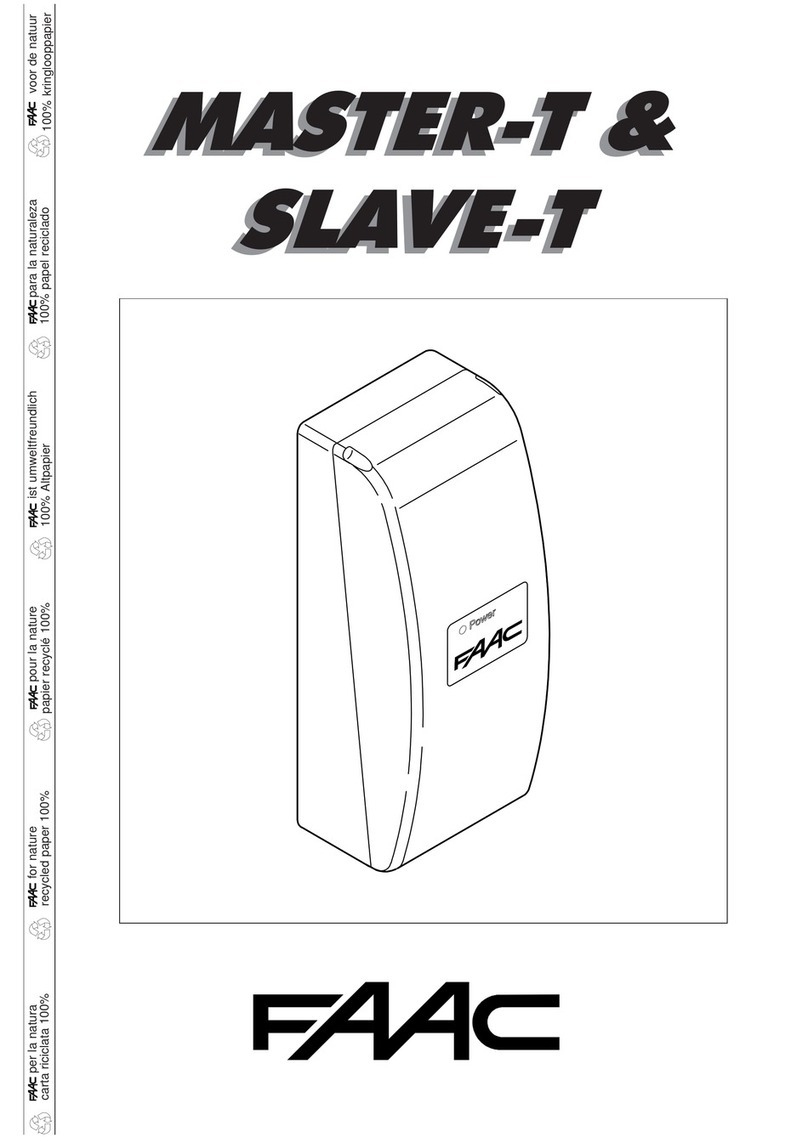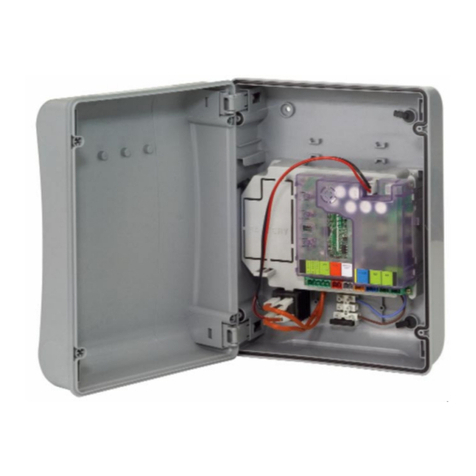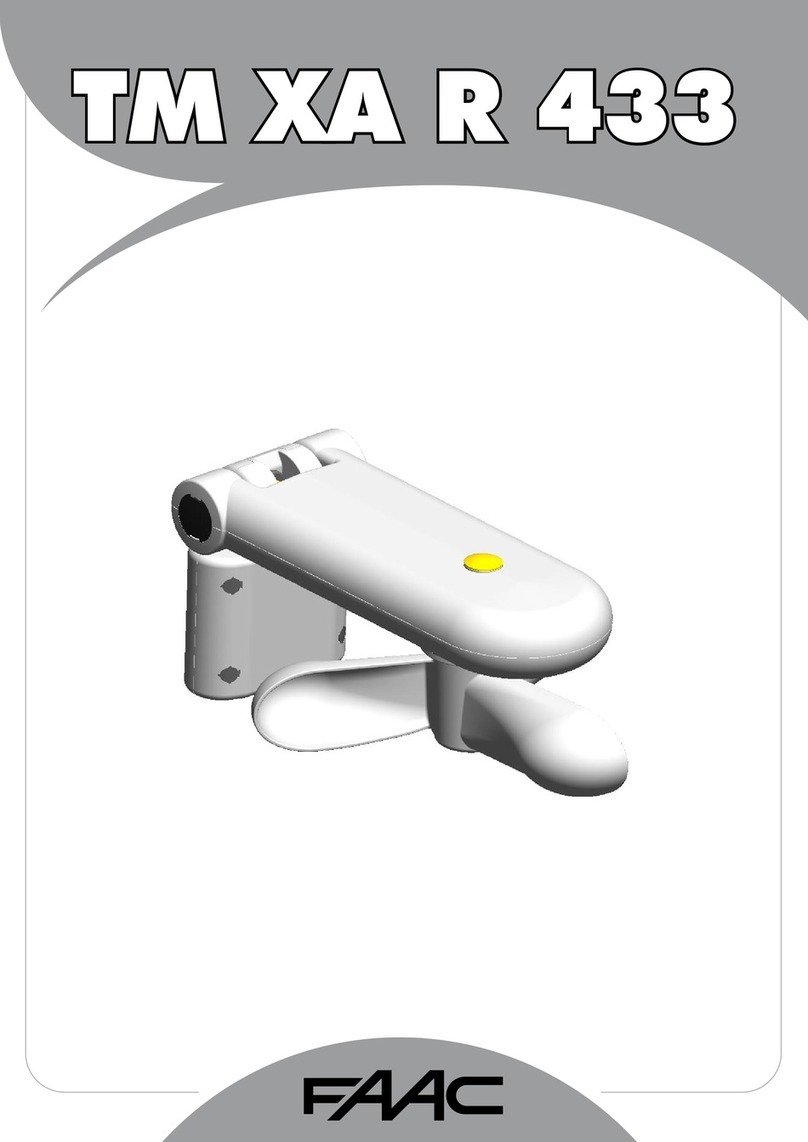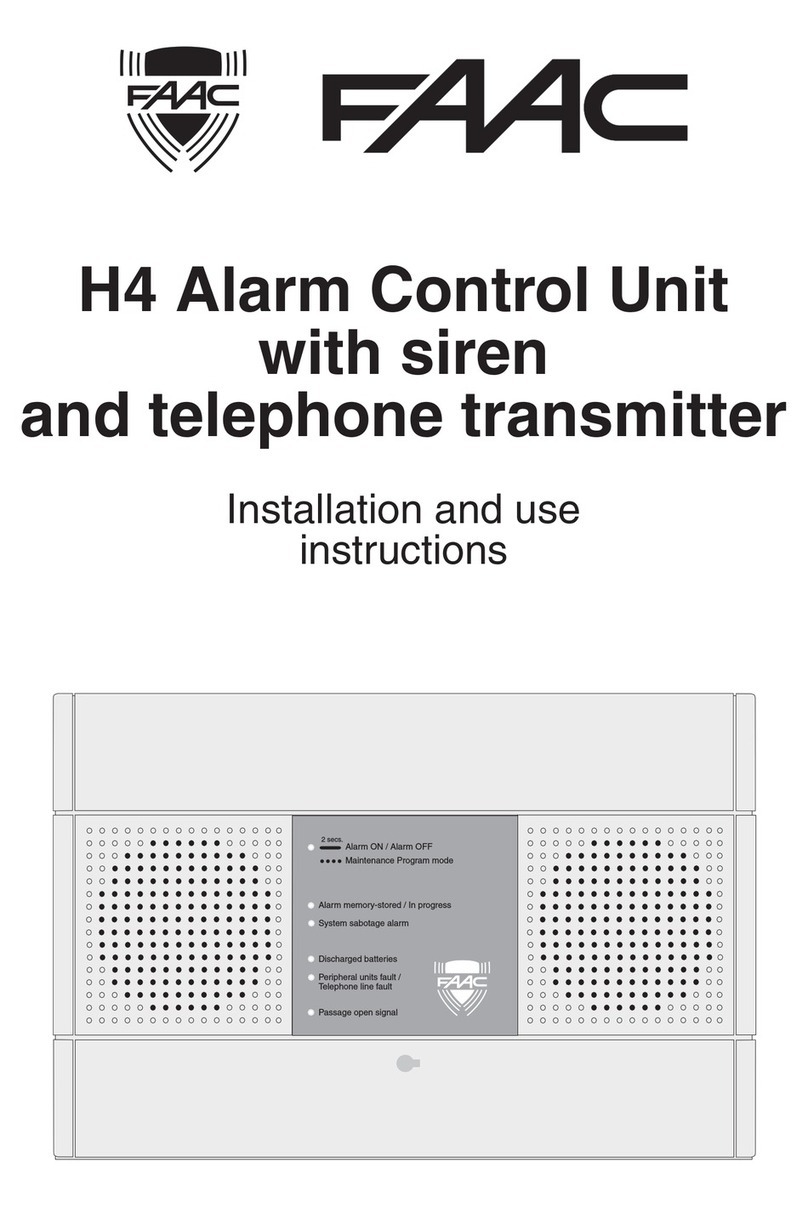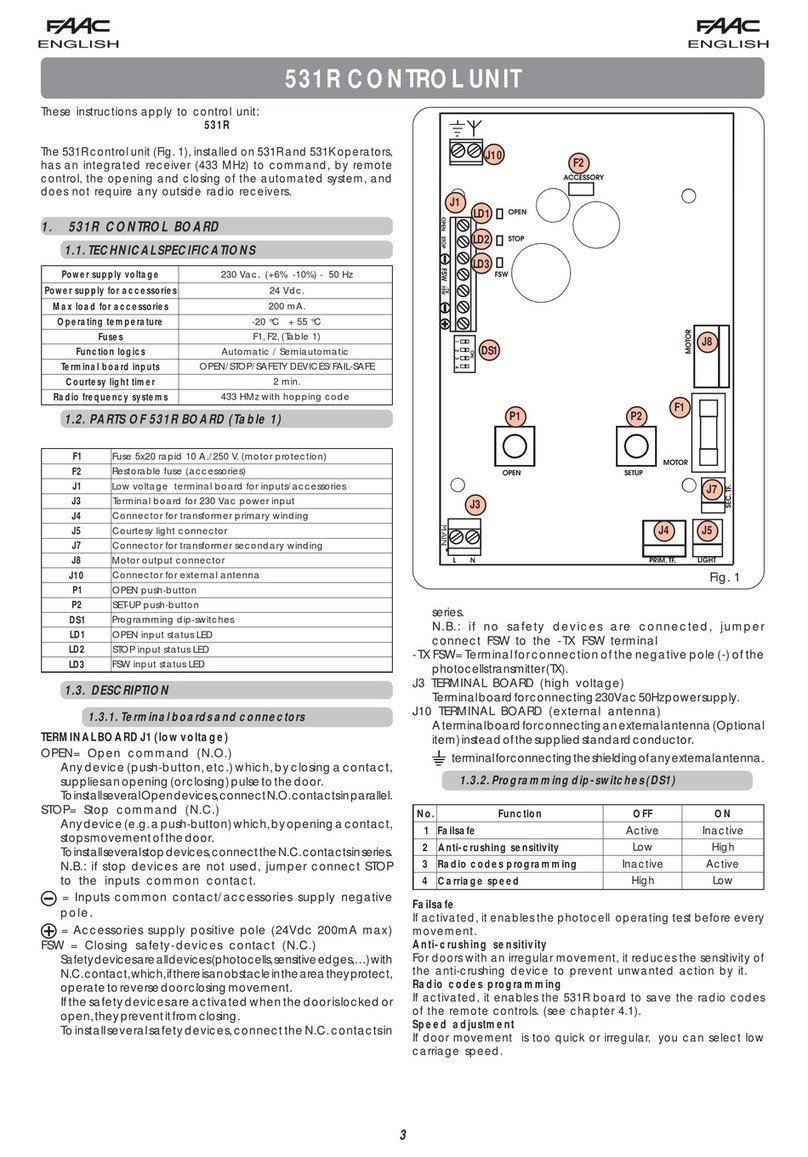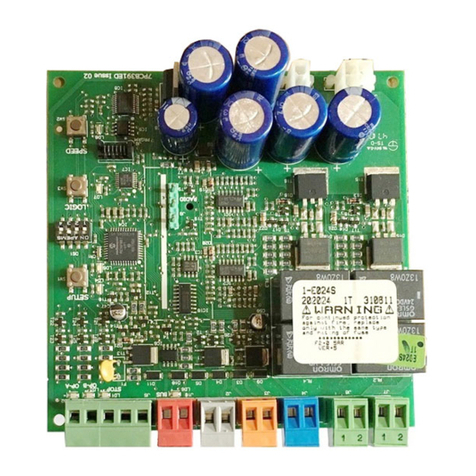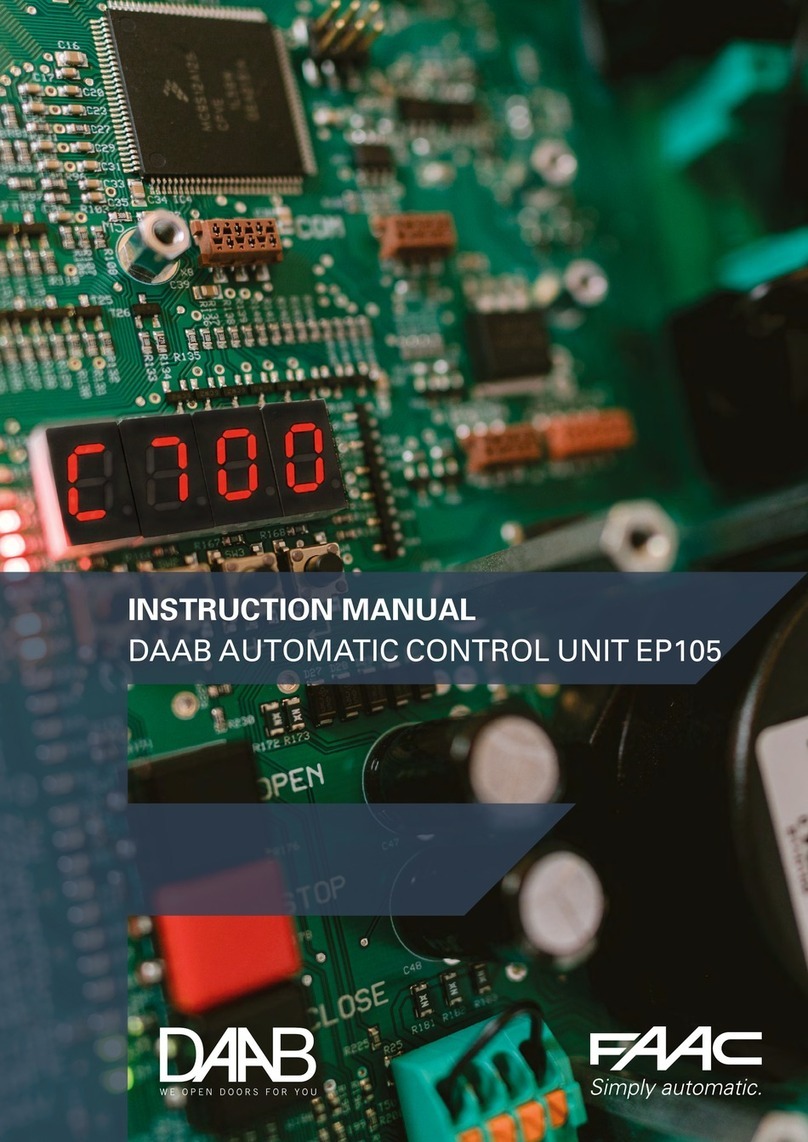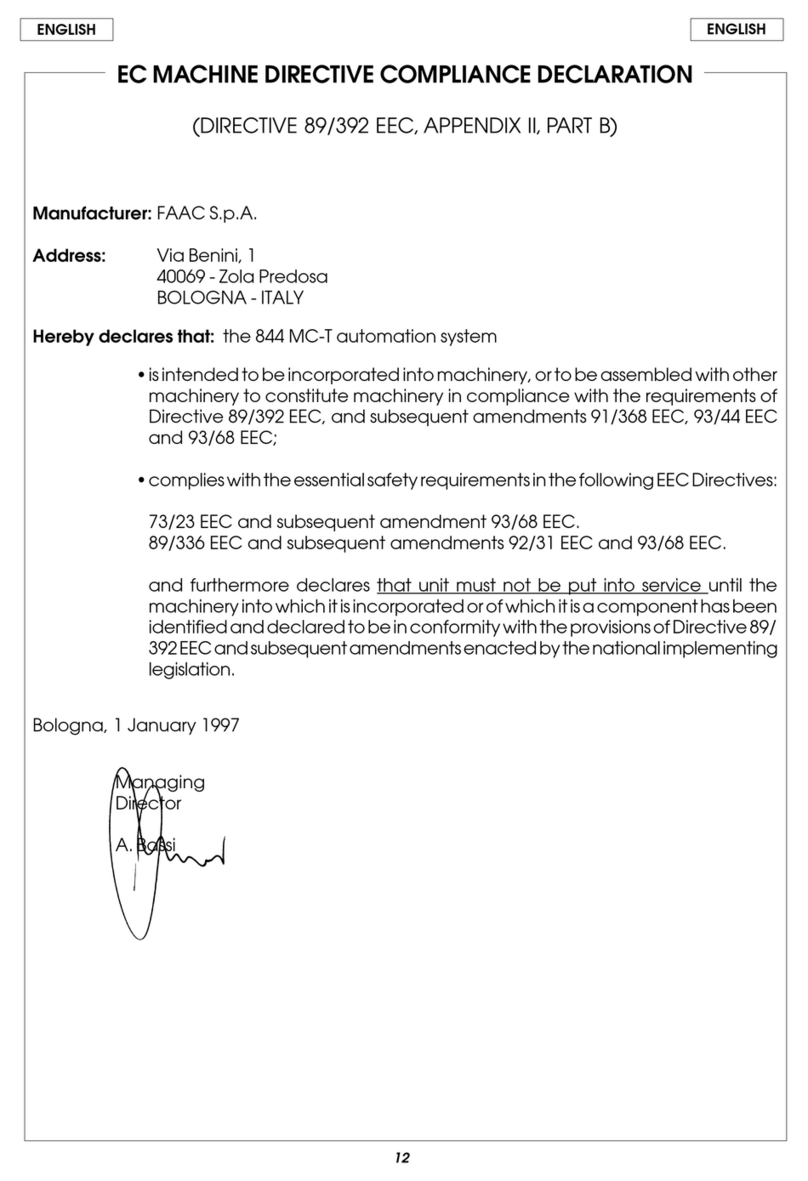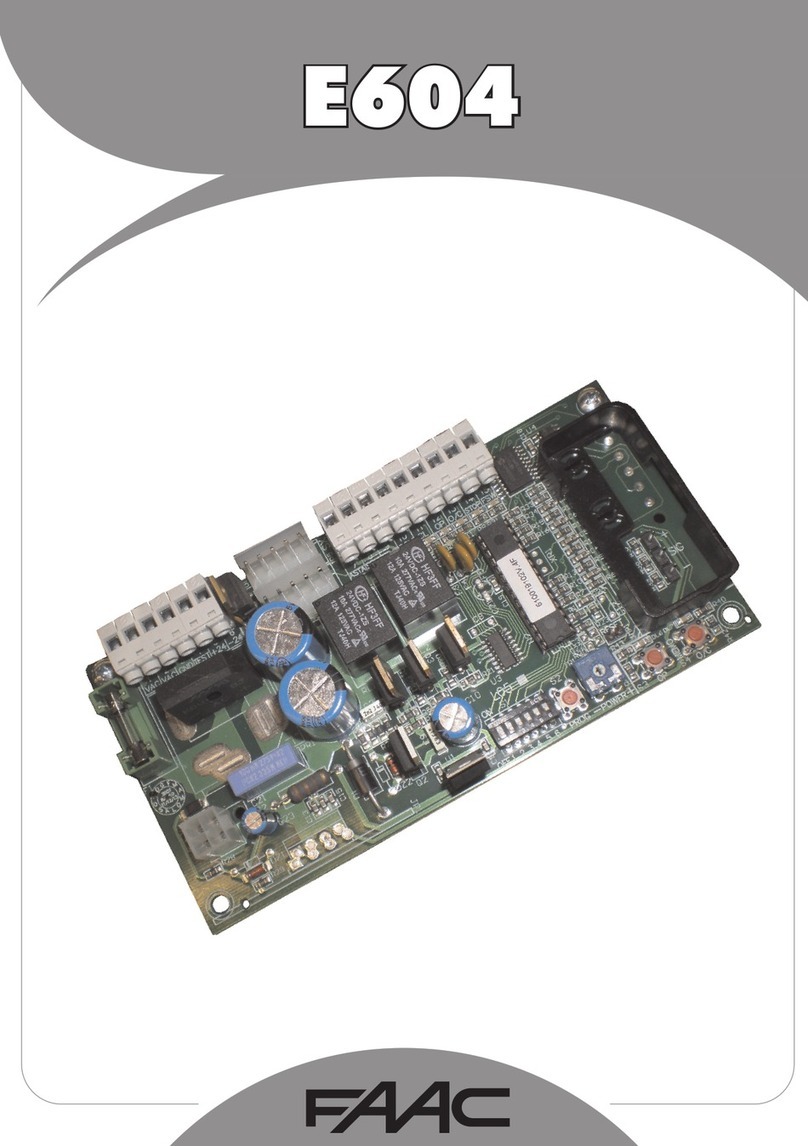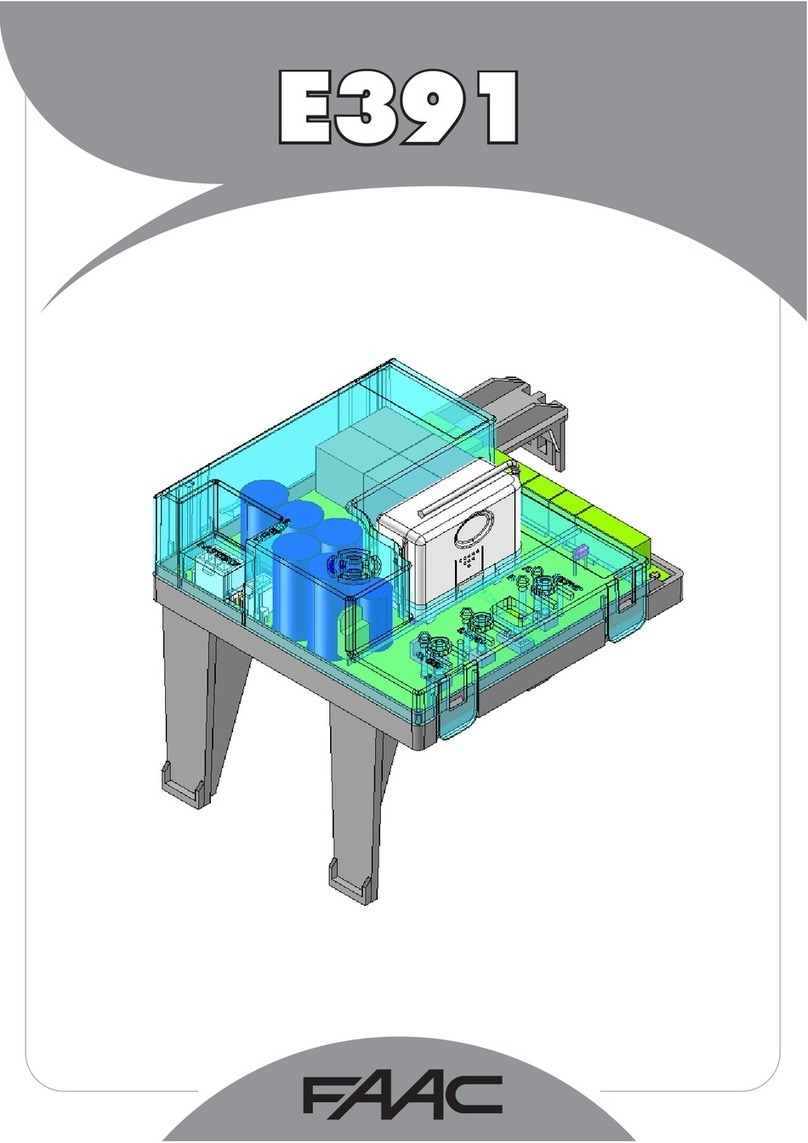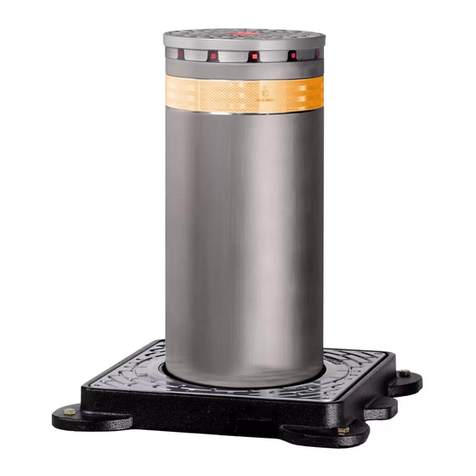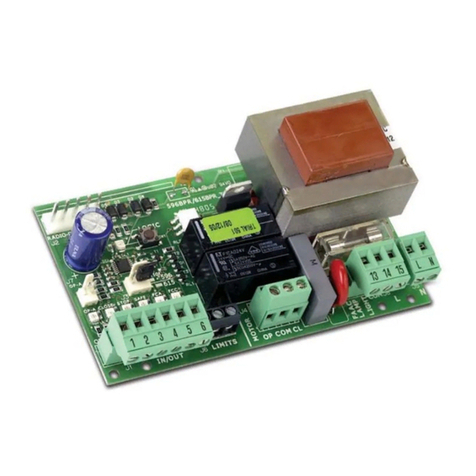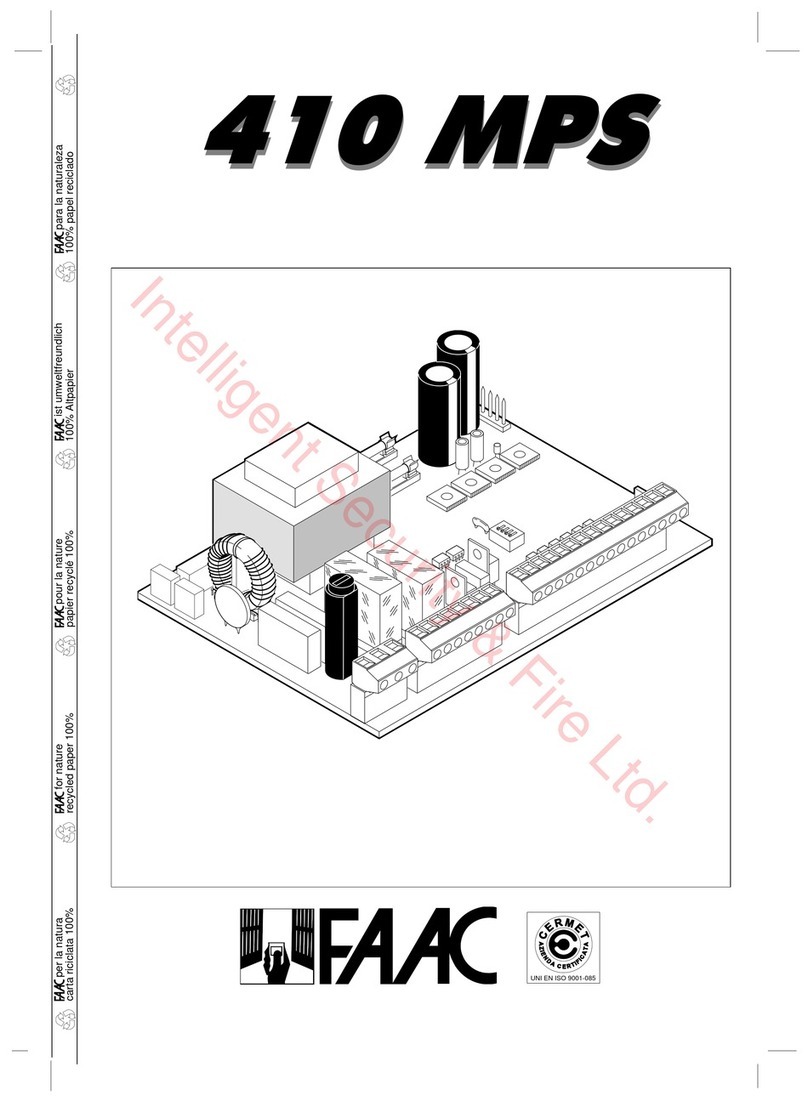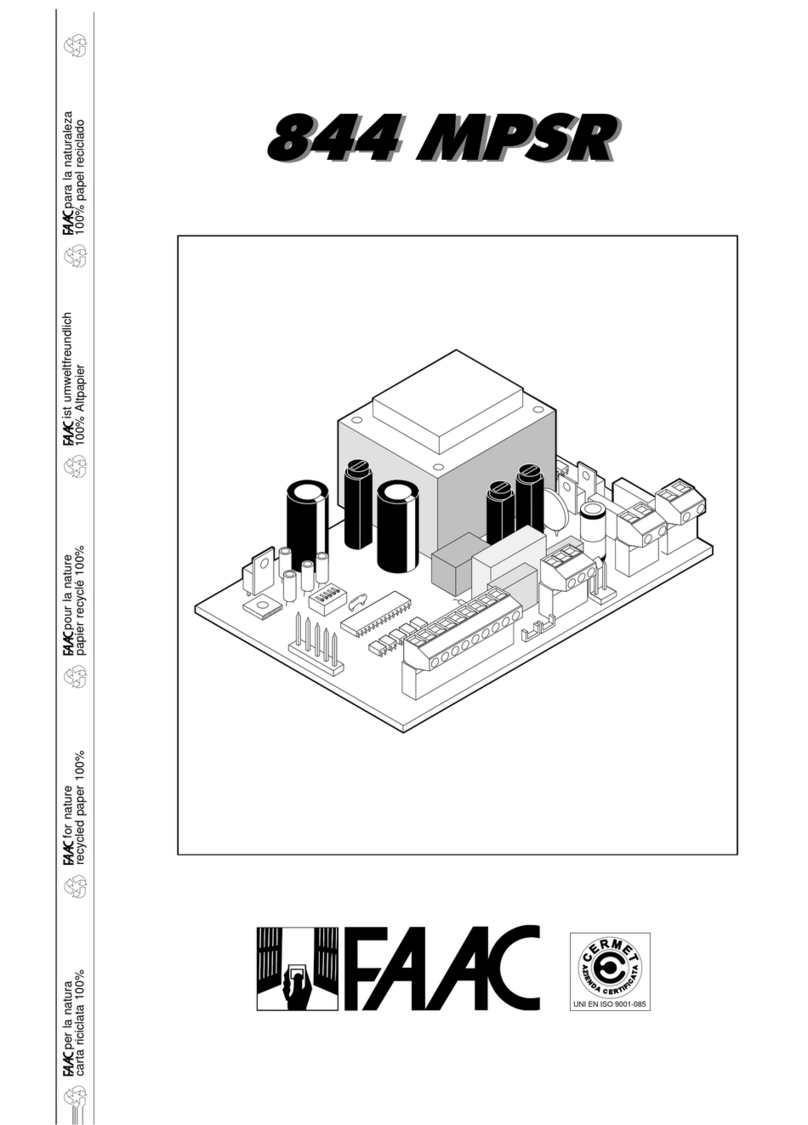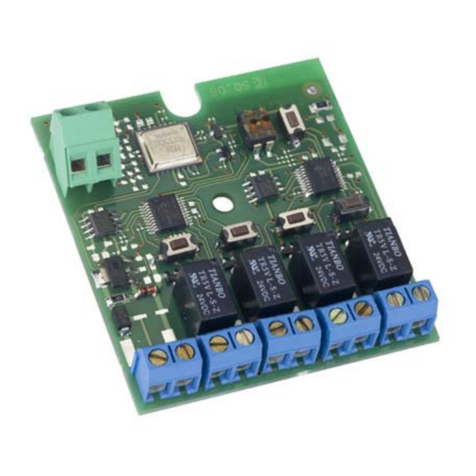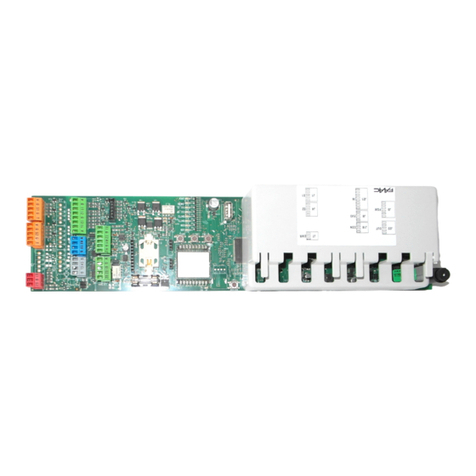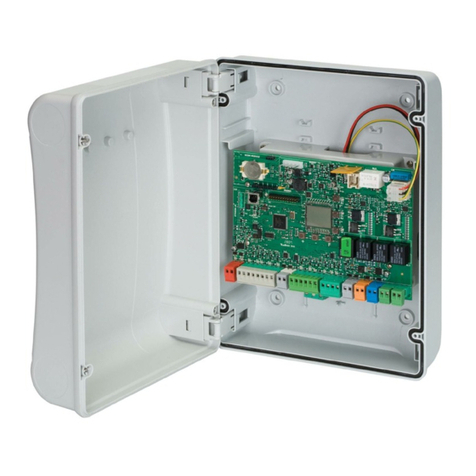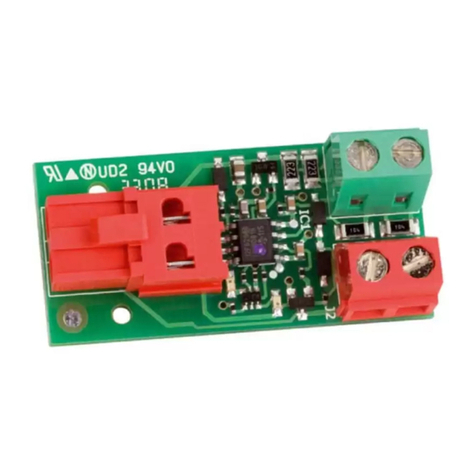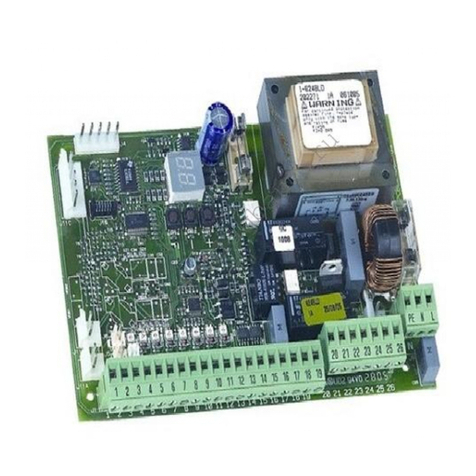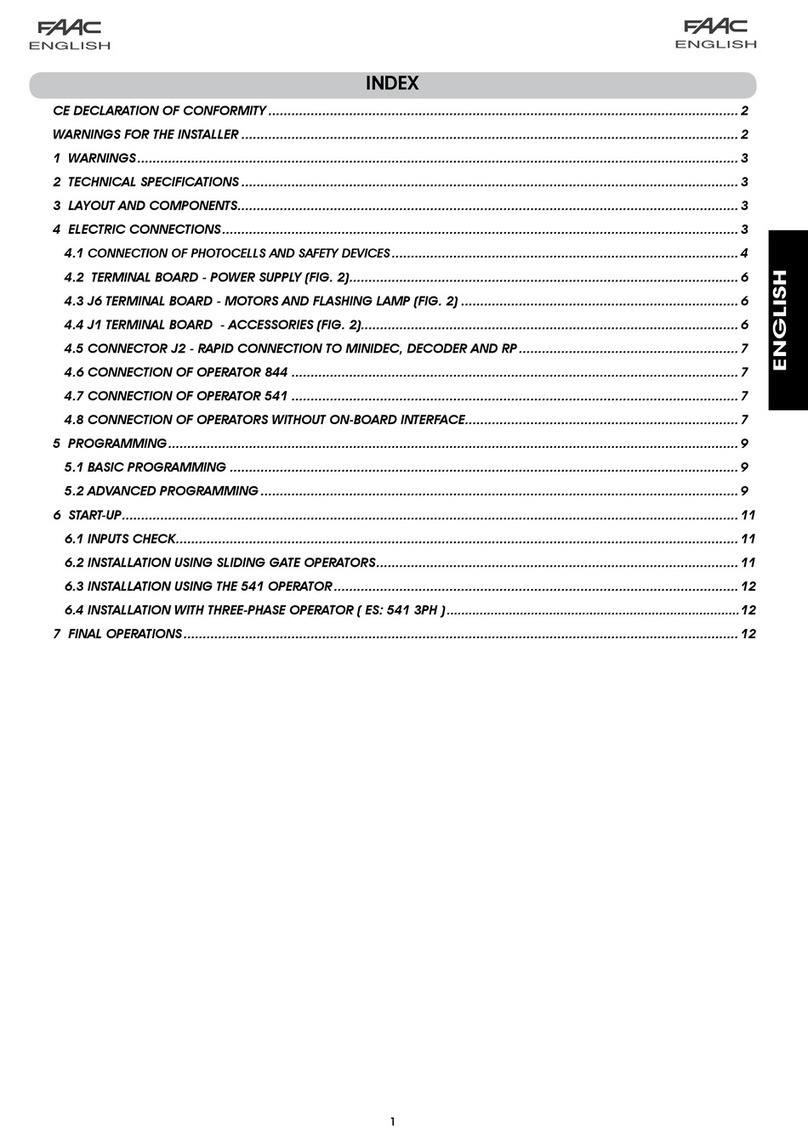8
ENGLISH
ALARM AND ERROR SIGNALS
If alarms (conditions not prejudicing gate operation) or errors
(conditions preventing the gate from operating), the display
shows the number referring to the condition.
AS
ASSISTANCE REQUEST – CYCLES COUNTER (coupled to the next
two functions):
Y = When the number of cycles settable with the following nc
and nd functions is reached, this facility pre-flashes for 8
sec. (in addition to the pre-flashing already set with the PF
function) before every movement.
no = the following functions
nc and nd
indicate how many cycles
the system effected up to a maximum displayable amount
of 99.990.
no no no no
nc
CYCLE PROGRAMMING (THOUSANDS):
If AS = Y, the display indicates the number of the thousands of
cycles after which assistance is requested (settable from 0
to 99).
If AS = no, the display indicates the number of the thousands of
effected cycles. The displayed value updates itself as the
cycles follow, interacting with the nd values.
00 00 00 00
nd
CYCLE PROGRAMMING (TENS):
If AS = Y, the display indicates the number of tens of cycles after
which assistance is requested (settable from 0to 99).
If AS = no, the display indicates the number of the tens of
effected cycles. The displayed value updates itself as the
cycles follow, interacting with the nc values.
00 00 00 00
Display Function Default
0
Default
1
Default
2
Default
3
START-UP
TIME LEARNING - SETUP
By powering up the board if a SETUP was never
executed, or if the board requests it, the letters
S0 together with the SETUP (DL18) LED flash on
the display, to indicate that the SETUP must be
executed. Take the leaves to halfway their
travel (very important for a successful SETUP).
Hold down the SETUP (SW3) push-button, until the SETUP
(DL18) LED goes OFF and leaf 2 (if present) begins the
slowed down closing movement, stopping when it reaches
the mechanical stop point. At this stage, S1 flashes on the
display (setup: FIRST CLOSURE LEAF 2)
Leaf 1 starts the slowed down closing movement, stopping
when it reaches the closing mechanical stop. At this stage,
S2 flashes on the display (setup: FIRST CLOSURE LEAF 1)
Leaf 1 begins the slowed down opening movement,
followed by leaf 2 (if present) also slowed down. At this
stage, S4 flashes on the display (setup: OPEN)
When the opening mechanical stop point is reached, both
leaves stop and leaf 2 (if present) automatically restarts
to close at full speed, followed by leaf 1. At this stage, S5
flashes on the display (setup: FAST CLOSE).
When the closing mechanical stop point is reached, both
leaves stop and leaf 1 restarts to open automatically at
full speed followed by leaf 2 (if present). At this stage, S6
flashes on the display (setup: FAST OPEN).
If an automatic logic was selected, the board counts the
set pause and automatically closes the gate. Otherwise,
give an OPEN pulse to close the gate.
1.
2.
3.
4.
5.
6.
2 2 Limited current MOT1
2 3 Limited current MOT2
2 4 LAMP output short circuited
2 5 LOCK output short circuited
3 0 XF-module radio codes memory full
3 5 Timer function active
4 0 Cycles programmed at second programming level
(n C ) exhausted.
4 5 Battery operation
0 1 Board failure
0 2 Thermal protection active
0 3 Motor 1 faliure
0 4 Motor 2 faliure
0 5 Last movement performed
1 0 Both motor 1 travel limit devices engaged
1 1 Both motor 2 travel limit devices engaged
1 5 Time-out elapsed
1 7 Motor 1 encoder failure
1 8 Motor 2 encoder failure
These signals will disappear during the following
cycle only if the cause is removed.When an ALARM occurs,
LED DL20 starts to flash. When an ERROR occurs, LED DL20
goes ON at steady beam. If you simultaneously press keys
+ and – the display will show the number of the fault in
progress, as shown in the following table.












